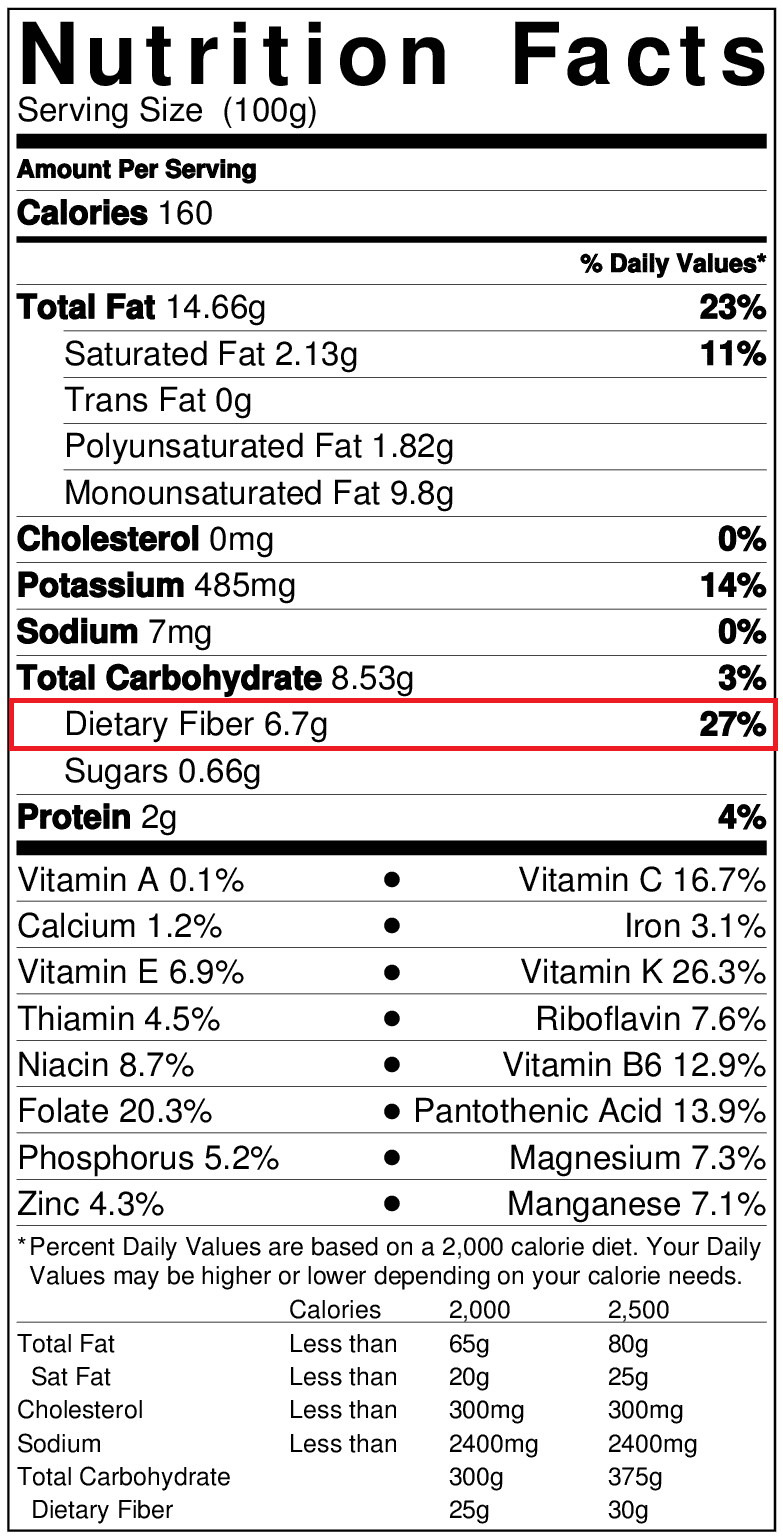Resistant Maltodextrin (Soluble Corn Fiber)
Fiber Name
- Resistant Maltodextrin (Soluble Corn Fiber)
Source
Corn
Background
Soluble Corn Fiber has been available on the US market since 2007 and it is used in foods and beverages across the Americas, Europe and Southeast Asia. Soluble Corn Fiber is produced from corn through enzymatic hydrolysis of corn starch. It has a low viscosity, is water soluble and very stable to heat, pH, and processing stresses. Soluble Corn Fiber helps to meet demand for a lower sugar, higher fiber ingredient that can be used to create consumer packaged food products that have lower sugar content while providing a good source of dietary fiber.
Nutritional Properties
Animal, in vitro and human studies have shown that Soluble Corn Fiber resists digestion in the small intestine and passes into the large intestine where it is fermented. Soluble Corn Fiber contains a mixture of α 1-6, α 1-4, α 1-2, and α 1-3 glucosidic linkages that contribute to its low digestibility. Changes in fecal short chain fatty acids (SCFA), decreased gut pH, and increased breath hydrogen indicate that it is fermented in the gut.
It is well known that a sudden increase in dietary fiber may cause mild gastrointestinal disturbances, but these are generally transient and improve with adaptation to the dietary fiber source. Soluble Corn Fiber is well tolerated at various doses. Clinical trials assessing the gastrointestinal tolerance of Soluble Corn Fiber at doses of 12-27g/day found it to be well tolerated over a period of 10 days to 3 weeks1 2 3 4. In a trial of 20 healthy volunteers, Soluble Corn Fiber was well tolerated at both a single dose of 40g and multiple doses totaling 65g over the day5.
Physiological Benefit
- Increases calcium absorption and may support bone mineralization
- Promotes digestive health through its effect on laxation
- Additional physiological effects that have been demonstrated by animal, in vitro and/or clinical studies, include:
- Prebiotic effect: Promotes the growth of beneficial bacteria while limiting the growth of less desirable bacteria.
- Elicits a low glycemic response and supports a postprandial blood glucose and insulin lowering effect when used to replace sugars.
- Long term weight management: By replacing higher calorie ingredients, soluble corn fiber may help reduce calorie intake.
Scientific substantiation of benefits
- Increased calcium absorption: In a three week, randomized, double-blind, placebo-controlled crossover study of 24 adolescents, calcium absorption was increased by 12% when 12g/day of Soluble Corn Fiber was consumed, compared to a control, in conjunction with a background diet that contained 600 mg/d of calcium6. In addition, researchers found that the change in calcium absorption was positively correlated with significant increases in gut bacteria, namely the phylum Bacteroides6. If the adolescents in this study had continued to consume Soluble Corn Fiber, allowing for increased calcium absorption, the researchers estimated that this would lead to additional 41 mg/day retained calcium and if persistent over a year would account for an additional 15 g of calcium, or about 1.8% of total body calcium. Similar increases in calcium absorption were reported in a four-week, randomized, double-blind, placebo-controlled, crossover study in 26 free-living adolescent females who consumed 10 and 20 g/day of fiber from Soluble Corn Fiber with their habitual diet containing ≤ 800 mg/day of calcium6. While the results of this human study only assessed calcium metabolism, a 12-week study conducted in rats investigated the impact of Soluble Corn Fiber on bone indices as well as calcium metabolism7. Compared to a cellulose control, Soluble Corn Fiber improved total bone mineral content (BMC), total bone mineral density (BMD), trabecular BMC and BMD, cortical BMC, and cortical area and thickness in the distal femur. Bone strength of the distal femur was also significantly improved by the ingestion of Soluble Corn Fiber13. In addition, a recent study by Jakeman et al. measured the dose-response of chronic soluble corn fiber intake over a 50-day period on bone turnover in healthy post-menopausal women using 41Ca methodology. Results indicated significant increases in bone calcium retention in relation to soluble corn fiber consumption in a dose-dependent manner. Serum bone-specific alkaline phosphatase concentrations were significantly increased at the 20 g dose versus the control (p=0.03). (Jakeman et al, unpublished)
- Laxation: Thirty-six healthy adults who consumed 20g/day of Soluble Corn Fiber in breakfast cereal and muffins for 10 days in a randomized placebo controlled, double-blind crossover study experienced an increase in fecal weight3. Increased fecal weight was also observed in another randomized, placebo controlled, double-blind crossover study of 21 healthy overweight men who ingested 21g/day of Soluble Corn Fiber for 21 days4.
- Prebiotic effect: After the consumption of 21g/day of Soluble Corn Fiber for 21 days, there was a 1 log increase in Bifidobacterium in 21 healthy men compared to a no fiber control4. Another study in 24 adolescents noted an increase in beneficial bacteria – Bacteroides, Butyricicoccus, Oscillibacter and Dialister – which was correlated with an increase in calcium absorption when 12g/day of Soluble Corn Fiber was consumed for three weeks8. The significant increase in beneficial bacteria observed in human studies has been supported by in vitro studies that have used human fecal inoculum under conditions that simulate the human gastrointestinal tract9 10.
- Favorable blood glucose and insulin response: Two clinical studies11 12 and one animal study13 have evaluated the glycemic effects of Soluble Corn Fiber. The postprandial glycemic response to Soluble Corn Fiber was compared to the glycemic response to glucose in 12 healthy adults in a randomized controlled crossover study9. Soluble Corn Fiber had a significantly lower incremental glucose and insulin response than the glucose control. Another acute study10 observed a significant lowering effect on postprandial blood glucose and insulin at a dose of 55g of Soluble Corn Fiber in randomized, single-blind, crossover study in 18 overweight adults compared to a full calorie control. Finally, a series of Soluble Corn Fiber formulations investigated in an animal study were found to yield significantly lower postprandial blood glucose and insulin responses than a maltodextrin control11.
What types of food is this fiber typically found in?
Soluble Corn Fiber is used in a wide variety of prepared foods, beverages, and condiments, including cereals, baked goods, candy, dairy products, frozen foods, soups, salad dressings, fruit drinks, carbonated beverages, meal replacement drinks, and flavored water.
Recommended Daily Intake
“Of the under-consumed nutrients, calcium, potassium, dietary fiber, and vitamin D are considered nutrients of public health concern because low intakes are associated with health concerns.” – Dietary Guidelines for American 2015-2020 (8th edition).
In the United States, the recommended dietary fiber intake is 14g/1,000kcal. For an average adult, this means a daily intake of 25g (female) or 38g (male). Most Americans only consume about half of the recommended intake (13.5 and 18g, respectively). This shortage in our diet is called the fiber gap.
Given Americans’ current eating habits, closing the fiber gap without consuming fiber-enriched foods would also mean significantly increasing calorie intake. To reach the recommended fiber intake without fiber-enriched foods, most Americans would need to increase their calorie intake by more than 500 calories per day. But meeting fiber requirements doesn’t have to mean adding calories if fiber enriched foods are consumed. Studies have shown, for example, that enriching grain foods with fiber (2.5g–5g) resulted in a fiber intake of 24.7g–39.1g/day with no caloric increase. (Nicklas et al, 2011; Jones, 2014)
Fiber-enriched foods help bridge the fiber gap while delivering excellent taste and additional metabolic benefits. The overall diet should have a mix of various fiber types.
Consuming a Variety of Fibers
Although most fibers will have more than one health-related effect, no one fiber can produce every potential health benefit. Some effects are well recognized for a large number of different fiber types, while others can be very fiber specific. To maximize the health benefits of fiber, it is important to consume a variety of fibers.
Fibers can be found in many different foods. The amount of fiber per serving can easily be found by looking at the Nutrition Facts Panel for the Dietary Fiber line.

Additionally, the fiber content in foods like raw fruits and vegetables that do not have a nutrition label can be found here.
Gastrointestinal Tolerance
Increasing fiber intake suddenly, particularly in individuals consuming a low fiber diet, may result in gastrointestinal effects, such as an increased number of stools per week, having softer stools (but not diarrhea) or having increased flatulence. These effects are due to either bulking effects or due to the fermentation of fiber in the gastrointestinal tract. These potential effects can be minimized by increasing fiber intake more gradually to allow the gastrointestinal tract to adapt. Thus, it may be helpful to decrease fiber intake until these feelings subside and then gradually increase fiber intake until the recommended intake of 14g/1,000kcal is achieved.


